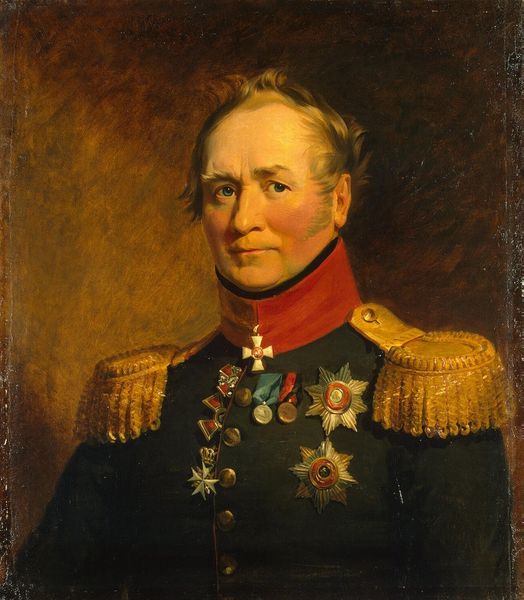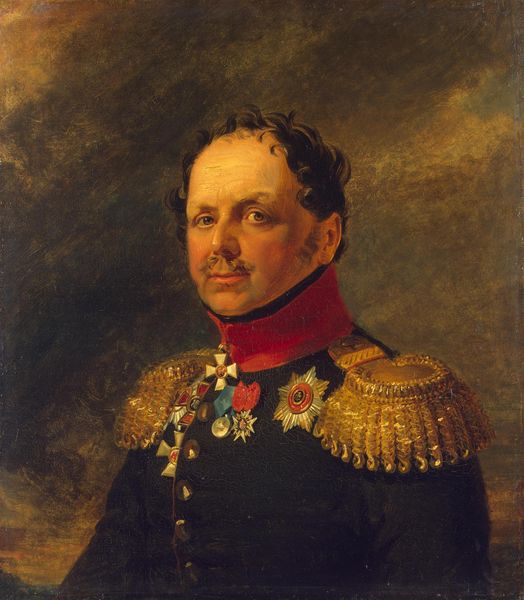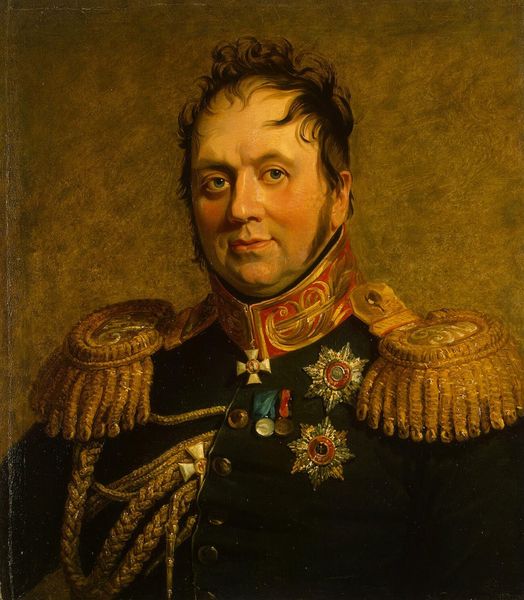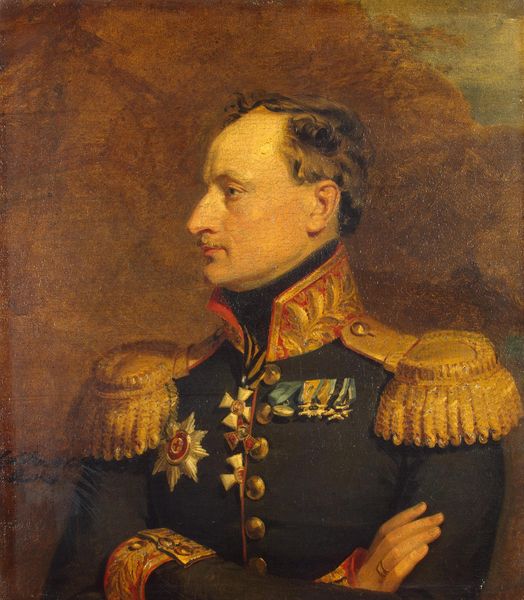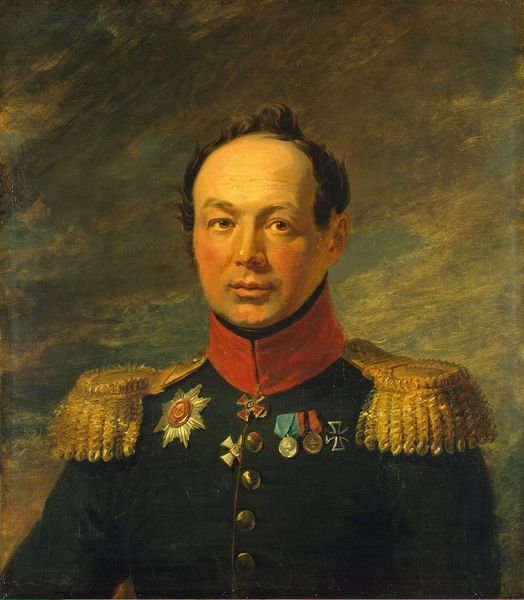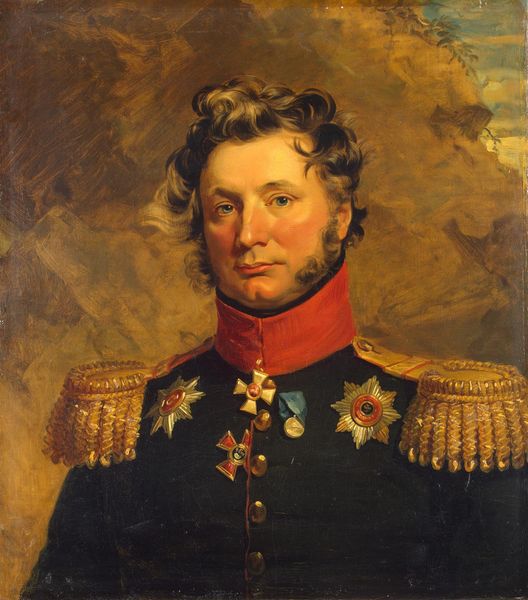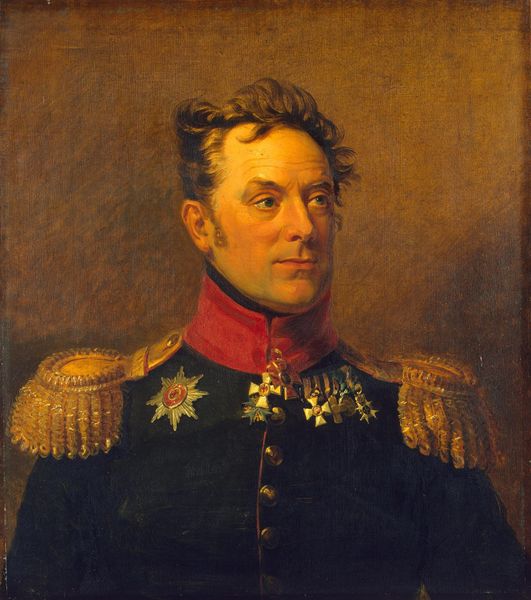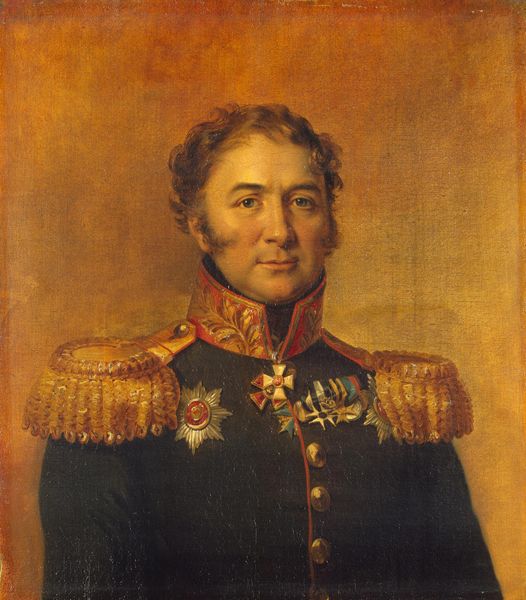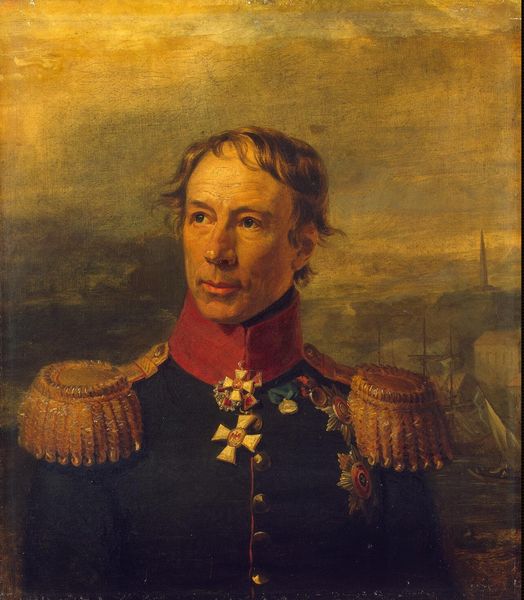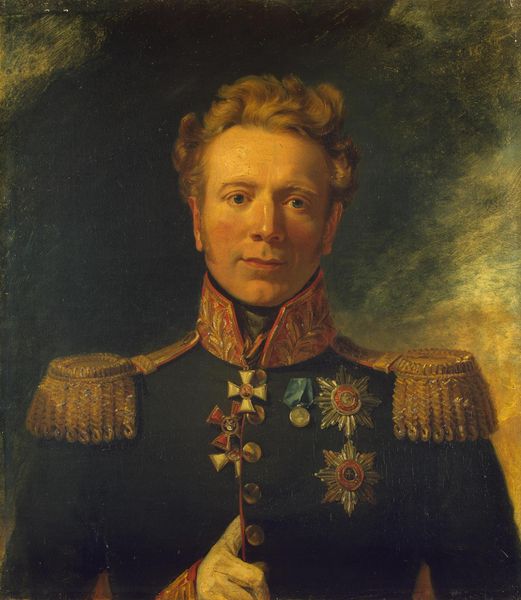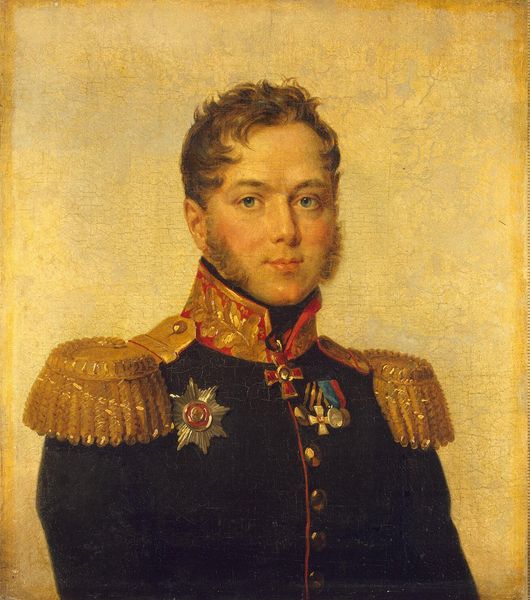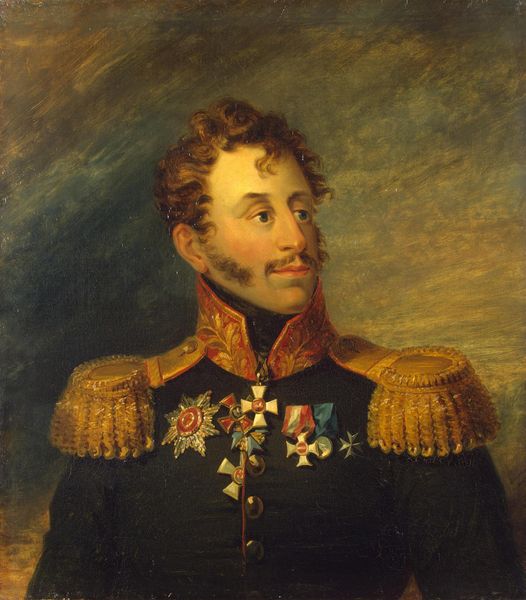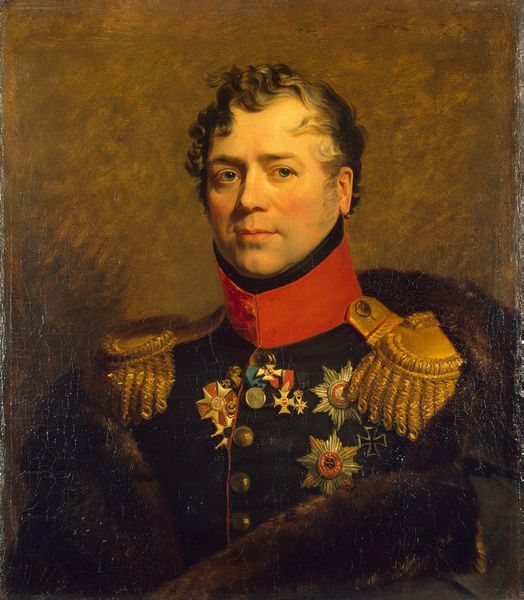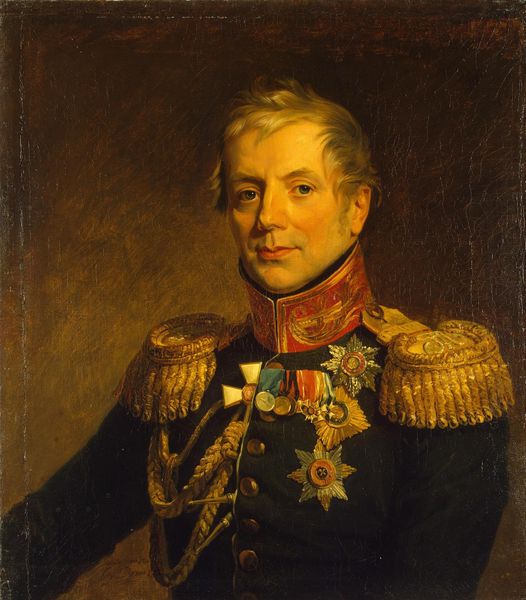
painting, oil-paint
#
portrait
#
portrait
#
painting
#
oil-paint
#
romanticism
#
russian-avant-garde
#
history-painting
Copyright: Public domain
Curator: Here we see George Dawe's portrait of Ilya Michailovich Duka, a Russian general. It’s currently housed in the Hermitage Museum. What's your immediate impression? Editor: All those medals… talk about dressing for the job you want. He has the air of a man who's seen some things, maybe not all of them pretty. Almost a sense of burdened duty in those eyes, or perhaps a slight boredom beneath the stern facade? Curator: It's intriguing you sense boredom. Consider the weight each medal carries. Beyond simple decoration, they're potent emblems of valour, service, loyalty - tiny monuments in miniature. The layering of these symbols, the careful arrangements—they're dense with meaning and perhaps even manufacture a desired emotion in the viewer. Editor: Meaning is, of course, in the eye of the beholder. While I concede those medals tell stories, what jumps out at me is the human element struggling to get out. It's a battle between the formal rigidity expected of his rank and the unvarnished truth in his gaze, maybe? I detect a certain resigned melancholy—the romantic hero slightly weary of his own legend. Curator: I find your read fascinating, because the very execution lends itself to that interpretation. Dawe was celebrated for capturing likenesses, but more so for his speed. He churned out these portraits by the hundreds for the Winter Palace after the Napoleonic Wars. Is that the reason, maybe, why he gave up on that? Editor: Quantity versus quality, huh? Maybe Duka was just another face on Dawe’s assembly line. Ironically, this lends credence to my earlier remark. If this portrait was executed rapidly, it explains that flash of human authenticity breaking through. Imperfection gives it charm. Curator: Certainly, Dawe's speed impacted the uniformity of the depictions, especially his famous work for the Military Gallery. I agree with you about that authentic sense, but at the end of the day, maybe the charm lives exactly in those meaningful objects, arranged meticulously, that are revealing not necessarily a personal story but a nation’s narrative? Editor: Perhaps we are just two sides of the same slightly tarnished coin. I am searching for what the general saw. And you're exploring what he symbolized, so it is the best of both worlds, in a way. Curator: Precisely, two halves make the whole. Now let's proceed.
Comments
No comments
Be the first to comment and join the conversation on the ultimate creative platform.
